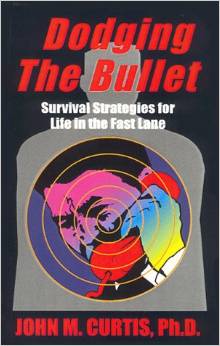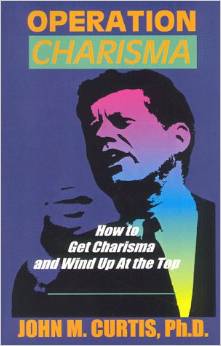Responding the avalanche of press reports that the nation is heading into recession, 73-year-old Donald Trump refuted the idea, saying that he’s considering payroll tax cuts at some point. Without being specific, Trump responded to growing number of U.S. economists worried about an economic slowdown, and possible recession with the yield curve briefly inverting last week. Stock market sell-offs aren’t as much about recession fears as cyclical profit-taking, something the nation’s biggest funds do when price-to-earning ratios [PE] get too large, corresponding to inflated share prices. While it’s sometimes difficult to assess stock value, market analysts know when the market’s “frothy.” Something said when stocks get too pricey. Proposing more tax cuts, Trump shows he has more confidence in fiscal polity than what the Federal Reserve Board does with monetary policy.
Trump blamed Fed Chairman Jerome Powell for raising rates aggressively four times in 2018, bumping up the federal finds rate to 2.75%. Taking the rate down 25 basis points Aug. 1, the Fed’s Open Market Committee [FOMC] cut rates the first time in 10 years, since former Fed Chairman Ben S. Bernake slashed rates Dec. 16, 2008 to zero-to-a-quarter-percent. Trump wants Powell to cut the 2.5% federal funds rate another 50 basis points to 2.00%, hoping to prevent the the current slowdown or possible recession. Powell hasn’t signaled whether or not he’s willing to continue cutting rates, certainly not how many basis points at the next FOMC meeting. Watching Democrats slam Trump on the economy, he had to show he’s thinking of what to do if the economy slows down. Calling for more tax cuts is the only thing Trump can do to show he’s attempting to stave off a possible recession.
Economies run in cycles, with the latest bull market lasting over 10 years. With our without Trump’s corporate tax cuts, there’s little doubt this far in the expansion cycle that a slowdown or recession was on the way. Democrats have done everything possible to attack Trump’s economy, knowing that the Dec. 23, 2017 tax bill probably pushed out a slowdown or recession by two-or-three years. Despite the inverted yield curve, most economists don’t see a recession until after the 2020 election, may in 2021. Considering a temporary payroll tax cut, Trump’s simply saying, “what-about-this, what-about-that,” not sure that anything would happen. Payroll taxes fund Medicare and Social Security, with no guarantee that there’s a long-term solution to cutting payroll taxes. Trump must look to the Fed to figure out how to tweak monetary policy enough to offset a slowing economy or possible recession.
If Powell looks at the same metrics as other economists, he’ll see the logic in cutting the federal funds rate as much as 50 basis points. While some economists, like Allianz SE’s Mohaamed El-Erian worry about negative interest rates, cutting the federal funds rate should have less impact on long-term rates. Long-term rates have been hammered down by foreign investors swooping up U.S. T-bills, making fixed interest rate investing more difficult especially for retirees. Trump 2017 tax bill slashed corporate tax rates, giving the biggest profit boom in history to the banking industry. Between now and the election, Trump has zero chance of passing a tax bill, with Democrats blaming him for growing federal budget deficits, now approaching Bush-43 levels of $1.4 trillion. Trump latest Continuing Budget Resolution [CBR] pushed the national debt to over $22 trillion.
When the Fed’s FOMC meets Sept. 17, they’ll be concerned about shrinking long-term interest rates, the lowest level in many years. While there are benefits to the mortgage industry, there’s a downside to long-term fixed income investors. Powell wants to prevent long-term rates from shrinking further or, worse yet, going negative, like they’ve don in Germany and Japan. Trump’s plan to slash payroll taxes won’t receive any backing with Democrats, especially it they reduce revenues to Medicare and Social Security. However much Trump’s trade war with China impacts the economy, there’s no end in sight to tariffs. Anyway Trump turns, he’ll be criticized by Democrats for the China trade war, regardless of whether it achieved its stated goal of reducing the $500 billion trade imbalance. Trump’s at the mercy of the Fed to add needed monetary stimulus into the economy.
Trump admitted that he’s not thinking about doing anything immediately in the way of payroll tax cuts or anything else. “I’m not talking about doing anything at this moment, but indexing is something that a lot of people have liked for a long time. And it’s something that would be very easy to do,” Trump said. “It’s something I am certainly thinking about,” trying to figure out any stimulus to the economy. If Wall Street would start buying again, it would go a long way in stopping the need for tax cuts. Whether Wall Street’s done selling off is anyone’s guess. As long as share prices are inflated, Wall Street will continue to sell off. If the current sell-off has further to go, it’s going to continue destabilizing long-term investors, especially retirees. Like most investors, Trump can’t do much without the Fed slashing the federal funds rate. When the current sell-off hits bottom, major funds will start buying again, boosting short-term interest rates and depressing gold prices.
\



